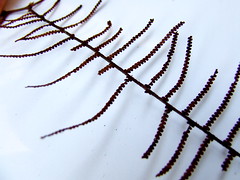 Last week we did a mold-making workshop with Pru Morrison at her fabulous Metro Arts Studio shared between about 5 other potters. How wonderful to work in this space- and share equipment and ideas with such an interesting group. We spent the first hour or so perving on works in progress and talking to Pru about her latest pieces bound for the big smoke.
Last week we did a mold-making workshop with Pru Morrison at her fabulous Metro Arts Studio shared between about 5 other potters. How wonderful to work in this space- and share equipment and ideas with such an interesting group. We spent the first hour or so perving on works in progress and talking to Pru about her latest pieces bound for the big smoke. Pru is an expert slip caster known for her slipcast simulacra of flasks, thermoses, bottles with legs and arms which she covers in naughty and thought-provoking terra sigilata drawings.
Pru is an expert slip caster known for her slipcast simulacra of flasks, thermoses, bottles with legs and arms which she covers in naughty and thought-provoking terra sigilata drawings. We wanted to learn the technique of making a plaster mold from an original form into which slip could later be poured. Shannon found a stick outside for that purpose. As we are casting from nature and Pru uses manufactured objects to create moulds, it was interesting for Pru as well as us as she figured out how to mold the stick. Pru's method was meticulous and patient. She was able to anticipate undercut problems and prevent them from occurring by leaving no dramatic corners and plugging up with clay.  The cast object could later be carved back if necessary. The piece was done in halves- as a 2-part mold. Some of Pru's more complex shapes are 6 or 8 parts and it can take a number of days to create a mold that will register and release well.
The cast object could later be carved back if necessary. The piece was done in halves- as a 2-part mold. Some of Pru's more complex shapes are 6 or 8 parts and it can take a number of days to create a mold that will register and release well.
 The cast object could later be carved back if necessary. The piece was done in halves- as a 2-part mold. Some of Pru's more complex shapes are 6 or 8 parts and it can take a number of days to create a mold that will register and release well.
The cast object could later be carved back if necessary. The piece was done in halves- as a 2-part mold. Some of Pru's more complex shapes are 6 or 8 parts and it can take a number of days to create a mold that will register and release well.Mixing and pouring the plaster was carefully done to minimise bubbles and while we were waiting we started to mold a cup handle from a 1950's cup. Before we knew it, it was 5 o'clock and we'd forgotten all about lunch!

The stick casting came apart perfectly and Pru said the mold was probably overengineered for the object but better to err on the safe side. I'm not sure that Shannon entirely agreed as she lugged the dinosaur-bone-like object back home on public transport!
We were both stuck by the contrast between Pru's crazy tattoo-like excisions on pots and her calm measured studio processes. But then you dont see many tattoo artists waving their arms around and emoting!





